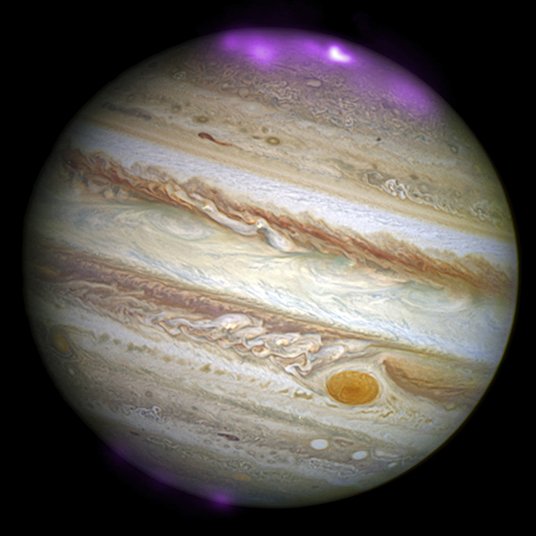
The first interstellar object ever seen in our solar system, named ‘Oumuamua, is giving scientists a fresh perspective on how planets, asteroids and comets form.

At the north pole of Jupiter eight storms are arranged around a single polar cyclone. In the south, one storm is encircled by five others.

If the Moon has enough water, and if it's reasonably convenient to access, future explorers might be able to use it as a resource.

The Hypatia stone - pebbles found in Egypt, have been known to have come to Earth from somewhere else. But new research shows they are even more alien, having been formed outside of our solar system and even before our sun existed.
As our sun gets older, it's losing mass, and so its gravitational pull becomes weaker. As a result, the orbits of all the planets in our solar system are expanding.

It's Surprisingly Like Earth. Saturn moon's three biggest puddles have a common equipotential surface – a sea level, just like our own oceans.

Researchers have identified eight, massive sheets of ice just below the Martian surface, and they appear to be relatively young deposits.

Using the now-complete Cassini data set, astronomers have created a new global topographic map of Titan.

According to the latest findings, it seems that ‘Oumuamua may actually be more icy than previously thought (thus indicated that it is a comet) and is not an alien spacecraft as some had hoped.

Scientists know of 750,000 or so asteroids and comets—and all of them are part of this fine solar system. That is, all of them but one. And as new research shows, it is weird.

NASA has launched a fleet of missions to study the planets in our solar system -- many of which have sent back crucial information about magnetospheres.

Scientists have detected a powerful X-ray aurora hotspot near Jupiter's south pole and it does not behave how they expected.

The object zoomed into our solar system from an extreme angle above the path in which most planets and asteroids orbit the sun.

According to a new analysis, the number of undiscovered and potentially-hazardous asteroids is lower than previously thought.

A mysterious signature in a region of the Red Planet where planetary scientists figure ice shouldn't exist.